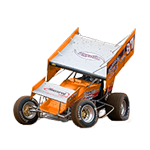- Home
- Illustrator
- Discussions
- Re: Can you lock an objects alignment?
- Re: Can you lock an objects alignment?
Copy link to clipboard
Copied
My discussion title/question is kind of vague to what I am asking.
At my place of work we use a lot of templates. I am part of a team responsible for creating and updating these templates. Most of them show distances between to points that have a line w a measurement label. My question is as follows.
If you have a line and center align a text box/object to it, then later need to extend that line but still want the text box/object to be center aligned to it is there a way to lock that alignment so it will move as the line extends?
I know if you extend the line both ways symmetrically you don't have to worry about it, but that is not always the case I am set with. Most of the time with a new template I just need to make a current template taller so I just direct select the top portion and move every thing up as needed. Unfortunately, after that I then have to reselect the measurement lines and realign my text box measurement label. I didn't know if there is a way to keep that track the centering when I extend the line up? I am trying to avoid stretching also because that has its own fine tune adjustments after the fact.
I use Illustrator every day and have not come across a setting like this, but every update has its own secrets that I have to find and explore and didn't know if such feature existed.
What I am asking is if there is something kind of like Title Alignment, but to a particular object, so that when you edit the object if something is aligned to the object it would track and update the alignment. Maybe there is a plugin out there?
 1 Correct answer
1 Correct answer
If I understand correctly, you're describing a scenario in which object 1's alignment to object 2 can be set to stay coincident to object 2, even as object 2 is transformed. That would be an awesome feature, but it's not available in Illustrator currently.
Most drafting/modeling applications have something of that sort. But then those apps also amass relational data as objects are added and edited, whereas spacial relationships in Illustrator are governed by a relatively simple set of rules, and
...Explore related tutorials & articles
Copy link to clipboard
Copied
I guess the type objects should be retained as (live) editable text objects. Does that apply?
Which version of Illustrator are you using?
Copy link to clipboard
Copied
If I understand correctly, you're describing a scenario in which object 1's alignment to object 2 can be set to stay coincident to object 2, even as object 2 is transformed. That would be an awesome feature, but it's not available in Illustrator currently.
Most drafting/modeling applications have something of that sort. But then those apps also amass relational data as objects are added and edited, whereas spacial relationships in Illustrator are governed by a relatively simple set of rules, and tend to be more "momentary" in nature; generally 'forgotten' after each operation. So, there may be some underlying obstacles to comprehensive implementation.
Request "Live Align" here: Illustrator Feature Requests (270 ideas) – Adobe Illustrator Feedback
Copy link to clipboard
Copied
There are many suggestions we could offer, but depends on exactly what you are asking, which is hard to follow.
Would help if you show a before and after screenshot, post a file with dropbox or similar, or simplify your question to one item at a time.
Copy link to clipboard
Copied
In this case it was not that hard for me to follow the request, but I may be wrong.
Anyway, you can download a sample .ai file (CC 2017 format) that contains a pretty simple approach. It may be appropriate, or not.
Copy link to clipboard
Copied
I tried this with Kurt's file, and it worked--if I understand correctly what you were wanting to do. The trick is setting up an action to reset your scaled text back to the 100% width. So I created a new action and let it record. I scaled the top line with the text, selected the text, clicked on Character in the context menu at the top, changed the Horizontal Scale back to 100, and stopped recording the action. I deleted the Scale instruction but kept the Character Setting. Now try scaling your line and text followed by running your action. You should be able to scale your line, run the action to fix your text, and keep it all centered in the meantime. ![]()
Copy link to clipboard
Copied
Well, you can make an action to reset the scaled text after you scaled the lines with the bounding box, but you don't have to do that because there is already a default shortcut to reset the text (Shift-Cmd-X, as mentioned in the sample file).
As long you are scaling (only) the lines with the Scale tool, you don't have to worry about text scaling as the text does not get scaled at all.
Copy link to clipboard
Copied
I think the OP was looking to foolproof the process--and I am apparently the perfect fool to goof up your sample. ![]()
At first, I thought the OP posted their file, which I tested out with the Free Transform Tool. I saw that it was centering with the Type on a Path (which is a great idea, BTW), but my free transform distorted the text. That's when setting up an action would help--when you have someone who doesn't read the instructions. Oops. ![]()
Copy link to clipboard
Copied
Create a pathType object (Text On A Path):
(Or, just use a program which provides dimension lines with measures that auto-update when you change the width of the path.)
JET
Copy link to clipboard
Copied
If you follow James’ instruction you will get exactly the approach that is contained in the sample file I provided in post 4.
It's a detailed echo 😉
Copy link to clipboard
Copied
Thanks everyone. There are a lot of good suggestions here. I never thought about using a Text on Path approach. The only issue with the way we have most things labeled is to keep the text horizontal on a vertical path. Right now its just setup with multiple objects that if the line needs to be extended the objects for the text have to be manually realigned. With photo example of the areas of what I was hoping to find a more automated solution to.
![]()

As mentioned in another post, I do know CAD has somewhat of a labeling feature... I just wish illustrator did to. I know that is not the initial intent for the software so it does not surprise me that it does not. At my work we use Illustrator for all our artwork setup and would be really out of the way to setup something in CAD to reopen in illustrator, plus my dept doesn't use CAD at all.
Thanks Everyone!
Copy link to clipboard
Copied
Can you see why it is almost always useful to show a sketch in the first place?
I could cobble together something that may be appropriate for the horizontal text on a vertical path, but I think you would be better served with a decent plugin for Illustrator (in case you don't want to use other applications at all).
Copy link to clipboard
Copied
I know that is not the initial intent for the software so it does not surprise me that it does not.
Sometimes, when you insist on everything being done in one particular software, you have to make concessions to the limitations of the software. The pathType workaround works fine if you're willing to simply use vertical running text for vertical dimensions. That's a legitimate convention even commonly used in drafting, so it's not something that would appear as "wrong" for dimensions.
Bu don't fall into the misconception that such things are the exclusive domain of vertical market software like CAD.
The behavior you're now describing is nowadays called "object anchoring". It's provided in all kinds of graphics programs (and even in FileMaker Pro's Layout Mode) originally spurred by the need for so-called "flexible layout" capability; the ability to easily multi-purpose a layout for different size screens or for web-like single-flow content in ebooks.
It's similar to the idea of the so-called "9 slice scaling" of Illustrator's Symbols and similar features in other programs (usually intended for web page buttons). You may be able to do it with that. (I don't have Illustrator installed on this laptop to test it for your purpose right now. It would probably be cumbersome because the behavior you want is dependent upon its being a Symbol Instance; so editing the text for individual instances would entail breaking the link to the Symbol, which would lose the live adjustability.)
But since the concept is advantageous for many other things, other programs are implementing anchoring more elegantly at the object level for any kind of objects. You simply set the anchoring as an object attribute. When that object is, for example, grouped with other objects, the group becomes regarded as the parent object, and therefore the reference object for the attribute.
For one example, Gravit Designer (which is free, can be downloaded as an installer, downloaded as a portable application, or used directly online) provides a very straightforward anchoring feature that lets you specify vertical and horizontal alignment "anchors" for any object relative to the bounds of its "parent" object. It does exactly what you're wanting:
Serif Affinity Designer (a very capable drawing program which sells for $50) provides the same thing via its Constraints Panel:
The "missing element" of even these well-implemented features is inclusion of a rotational anchor switch. So, for example, when you are establishing a dimensioning convention which requires the text of dimension values to always appear horizontal relative to the page, the live adjustability behavior is effectively limited to vertical and horizontal dimensions. But angled dimensions (as shown in my first post) are quite commonly needed not just in drafting, but in general graphics (for example, die cut paths for boxes). That's another good reason to adopt the convention of just having the text values parallel to the dimension lines.
The omission is not terribly onerous when object-level anchoring is implemented as in the examples above, because you can still subselect the text object and correct its rotation after you've rotated the group. But for both your desired dimensioning style and many other things, a simple rotational checkbox (constituting a choice between rotational alignment to the parent object or the page) is an opportunity to flesh out such features.
JET
Find more inspiration, events, and resources on the new Adobe Community
Explore Now

